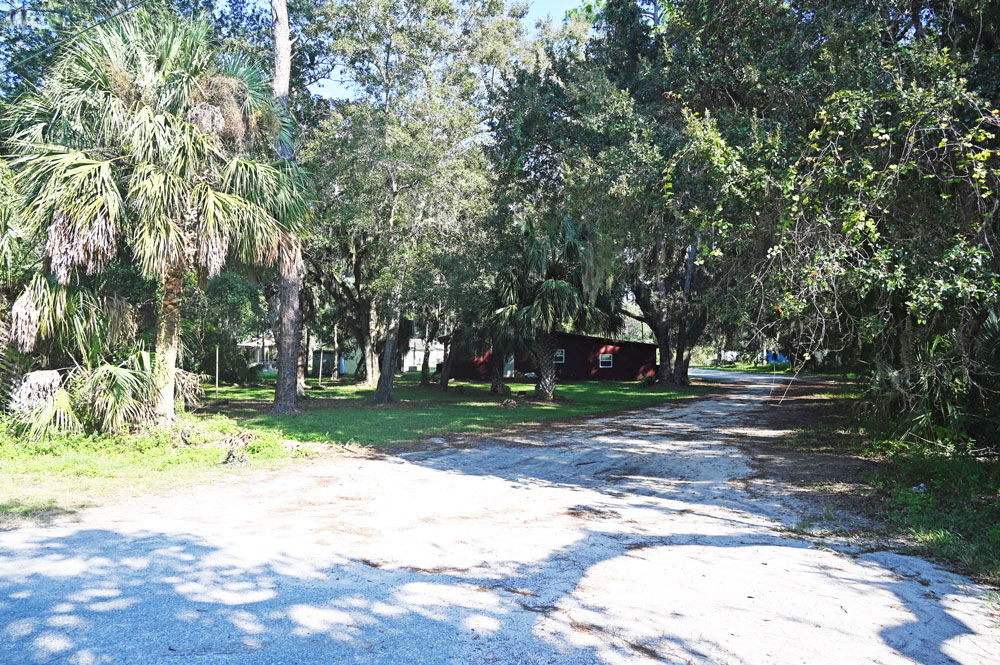
The DeSantis administration last year wanted to turn portions of state parks into pickleball courts, golf courses and hotels. The public howled. The administration retreated. A few months ago the governor signed a bill protecting parks from such development.
Flagler County merely wants to sell a small portion of its parkland, without a bid, so it can be turned into a parking lot. The acreage includes a few stately old trees, including at least one oak almost certainly older than the county, possibly two.
It’s in out-of-the-way Espanola. Perhaps the county was hoping no one would notice it all leveled, though the trees are part of what makes the drive along County Road 13 and County Road 205–one of Florida’s Heritage Crossroads–as rustic as it is. The county’s proposal has the tone-deaf aspect of its proposal 10 years ago to turn over Princess Place Preserve to an extreme-sports event that would have ravaged the park, in exchange for a few dollars.
St. Paul’s Missionary Baptist Church in Espanola has been asking Flagler County government for the 0.3-acre parcel for a couple of years. It is a sliver of county parkland. The church wants to rezone it and convert it to a parking lot, to be used just for a few hours a week, for its two weekly services.
It would leave another sliver of the county park orphaned, as the parking lot would slice through the two sides of the park. The church could sell its property in the future, and the land could be put to other uses: it fronts County Road 205.
The price has not been discussed. “$1, $500, $1,000,” Eric Revuelta, the county’s land manager, said could be considered, as he put it to the County Commission, “or if we wanted to go ahead and do an appraisal and see what it appraises that and request that amount, then we could go in that direction as well.”
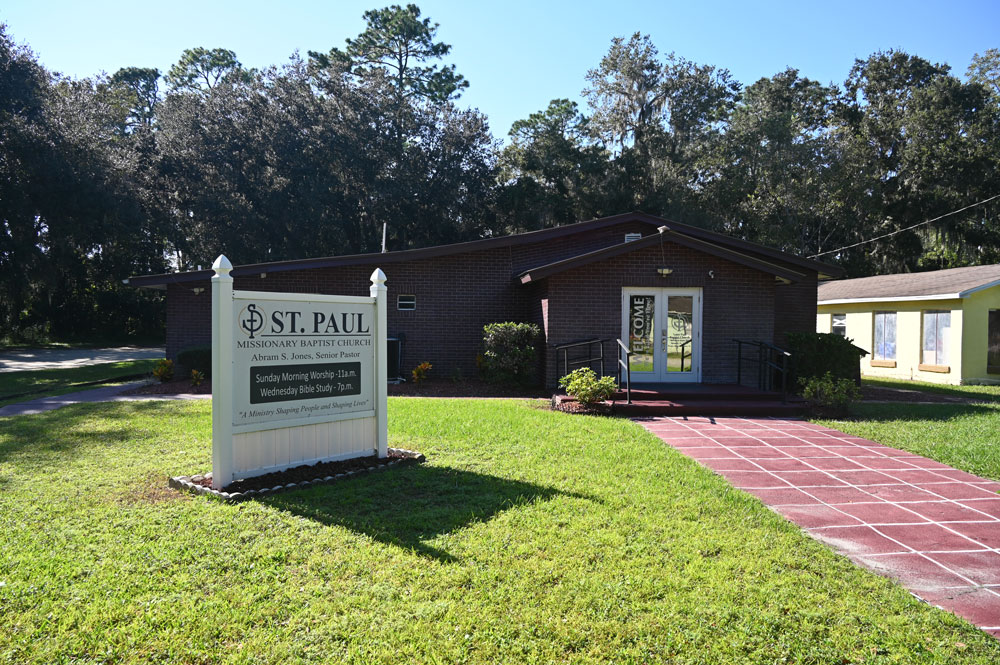
The county would preserve a 15-foot strip as a utility easement. Stormwater requirements if the church acquires the property are murky.
Remarkably, Revuelta presented the request to the County Commission as a “fairly straightforward” formality on Monday. It would just need the commission’s approval for the sale–at whatever nominal price is decided–to proceed. No bidding out the land, no hearings, no public notices beyond cursive ones embedded in commission meeting agendas.
The County Commission shrugged off the proposal’s implications as it almost certainly would not had a similar proposal involved, say, the popular Wadsworth Park in Flagler Beach or Princess Place Preserve. But Espanola is a poor, neglected area of the county with a significant Black population and a typically invisible political constituency.
Only Conty Attorney Michael Rodriguez applied the brakes with a pair of legal concerns. The county administration had apparently not vetted the proposal through Rodriguez’s office first, as would have been the norm, since Revuelta’s proposal was oblivious of the legal issues.
The county owns the 12-acre Espanola Community Park, which curves around County Road 205 and is two-thirds wooded, with a playground, a basketball court and the Frank Giddens Sr. Community Center cradled by trees toward the middle.
St. Paul’s sits in a 50-year-old building on a third of an acre behind the northeast point of the park, next to the historic Espanola Schoolhouse. It is flanked by private if dilapidated houses on either side. It fronts Knox Jones Avenue to the east, with a driveway that crosses from Knox Jones Avenue to County Road 205, through the county park.
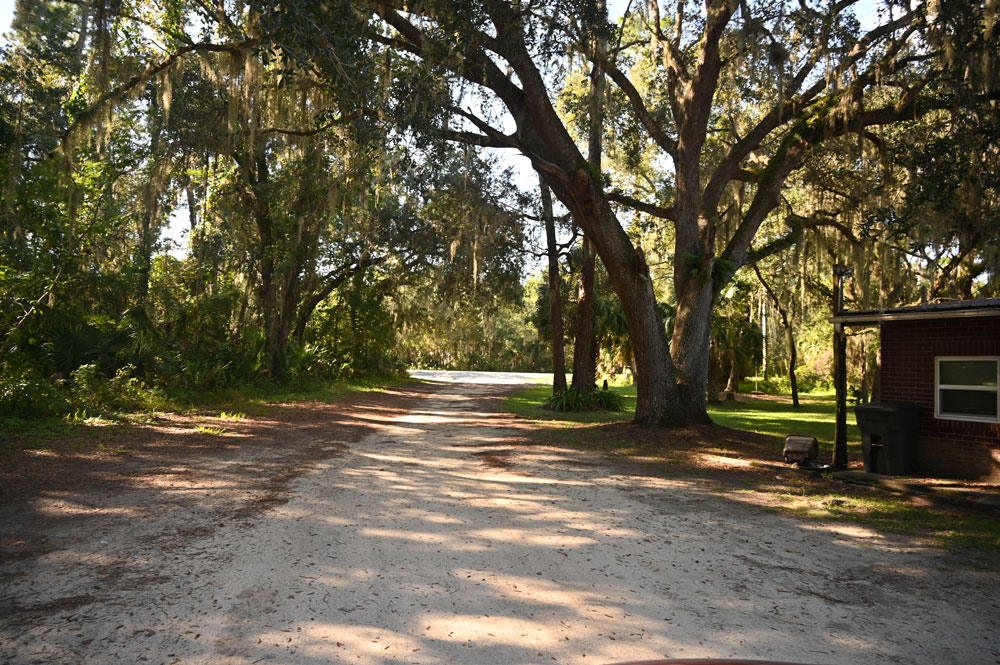
The county has no idea how or why the driveway cuts through public land. It does not appear as church property on the property appraiser’s website, so its legality was not documented Monday, only speculated. In Revuelta’s words, “that driveway apparently has been there for a long time, but I’m not sure how exactly, so it may have been one of those uses that was in place prior to the property being transferred or acquired by the county.” The county acquired the park land in 1988. The church acquired the property in 1981.
It’s not clear why the church doesn’t use the driveway as its parking lot. The portion it is using on county land is certainly larger, by square footage, than the portion it wants to buy. And the church is already using it for parking for its two services per week (one on Sunday, one on Wednesday).
At no point was the commission informed of the size of the driveway, which is more accurately defined as a dirt road, or that it was already being used as a parking lot. At no point was the county informed that there is a vacant, treeless lot almost immediately across from the church on Knox Jones Avenue that would be larger than the parcel it wants to buy, and that would accommodate parking. The lot’s just market value, according to the property appraiser’s website, is a mere $6,400.
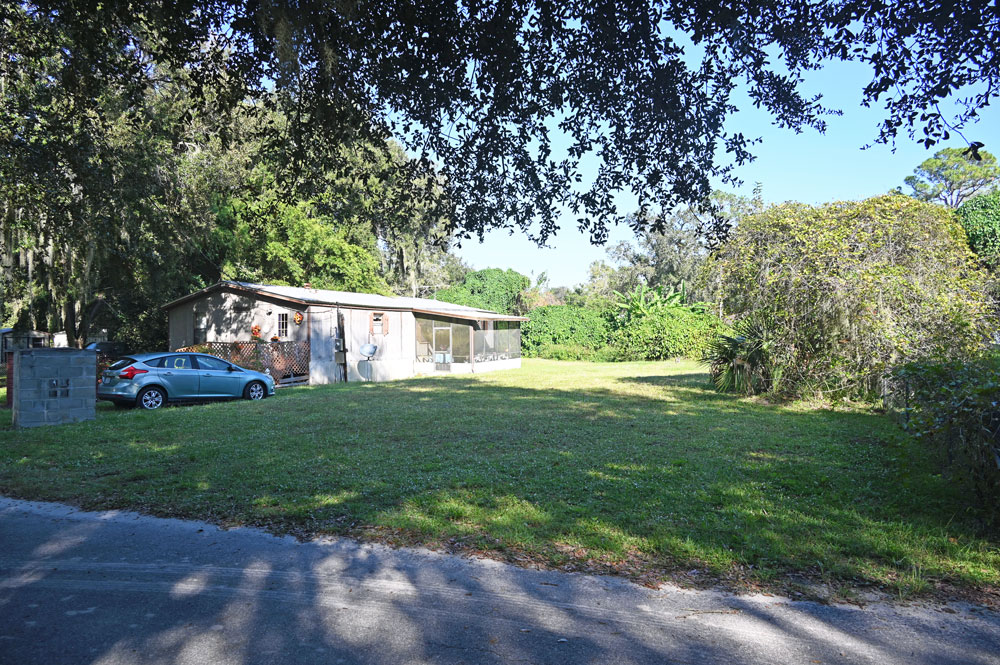
The smaller county-owned area St. Paul wants to buy, on the backside of the church, appears mowed and maintained by the church, with a couple of tree stumps showing that some had already been felled, but with a dozen more still standing tall and creating an impressive canopy that would be the envy of any park. It could be compared to Linear Park’s handsomer segments in Palm Coast. It is nowhere near a third of an acre, unless it were combined with the through road.
The county considers it disposable.
“It’s in an area of the park that is not really integral to the use of the park,” Revuelta said. “There are no amenities. And really, if you see the configuration of that northern portion, there’s not a whole lot of future plans that would be affected by the transfer of the property to the church.”
It was an odd if not a disturbing qualifier for a manager responsible for the county’s lands, including its protected lands. Most parks are made up of large swaths of land that, by definition, are left to nature to create the sense of parkland. “Amenities” may be necessary, but they are often subordinate in scale to relatively undisturbed parkland, as they are at Wadsworth Park, for example. Even Holland Park, Palm Coast’s most urban city park, has a few acres of untouched greenery, not including its buffer from residential homes. The city’s 21-acre Waterfront Park is largely woods (though the city has also felled a huge swath of it to pave over for a parking lot).
The land manager’s description also ignored the role the parkland plays along the Scenic Highway.
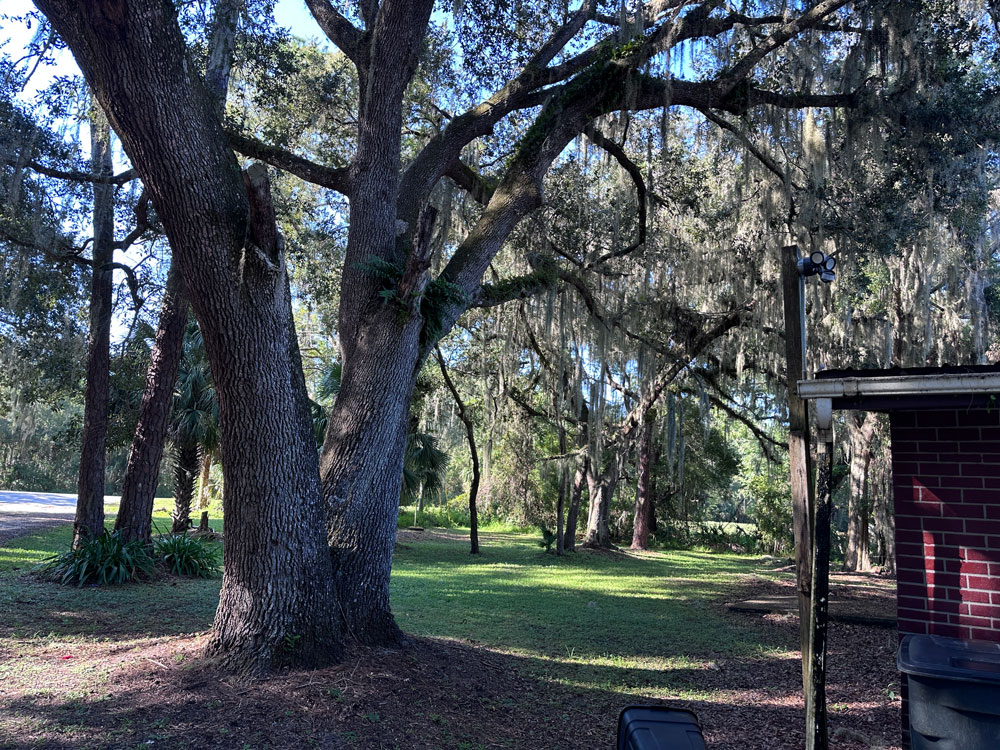
Revuelta was looking for the commission’s direction. The discussion focused on particulars–the easement, the size of the eventual parking lot, whether it would be paved over or not, and that orphaned segment of land at the north end of the park. The discussion was as decontextualized from the land where it sits as was the county’s presentation. Commission Chair Andy Dance suggested the orphaned sliver could be offered to adjacent property owners.
That was when Rodriguez intervened. While state law allows the county to sell land to certain non-profits without putting it out to bid, “the nonprofit has to be specifically organized for community purposes,” Rodriguez said. “Churches are not normally organized for community purposes. They’re normally organized for religious purposes. So the intention in their application for this piece of property is going to have to show that the intent for the property is for it to be used for as what the statute describes.”
St. Paul, in other words, would have to prove that its parking lot would be to accommodate cars there to take part in activities intended “for the promotion of community interest and welfare,” Rodriguez said. “That’s the caveat for the county to be able to sell the property without putting it up for bid.” Church services don’t count. The orphaned segment of land, in the shape of a triangle, can’t just be sold off without a bid, either. As it looks now, the church looking to use the land for a parking lot “would then be an expansion of their religious use,” the county attorney said. “I don’t want to put this up, have it be sold and then subject the county to a potential challenge of selling public property without it being put to bid to the public.”
The commission pulled back from the proposal somewhat–not because of the implications of selling parkland for a parking lot, but over the legal technicalities the county attorney was raising, and only to suggest that the legalities be better vetted within the scope of the church’s intentions. The commissioners also directed the administration to consider leasing the land, which would not keep it from being turned into a parking lot.
The next day, with no intended irony, the county issued a press release boasting about completing a 5.15-acre purchase under the county’s Environmentally Sensitive Land program.
![]()
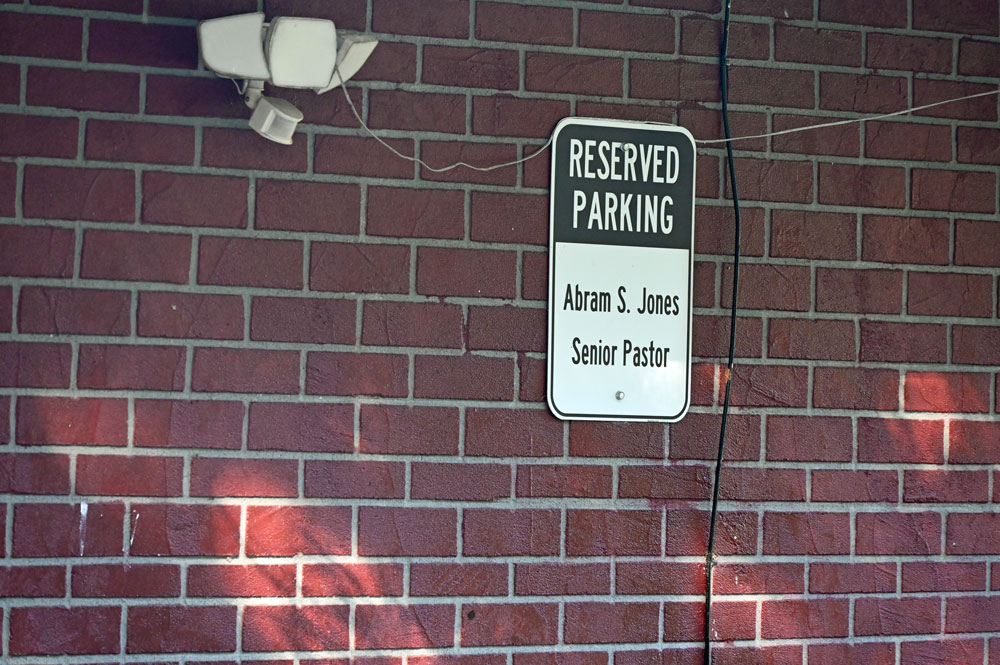















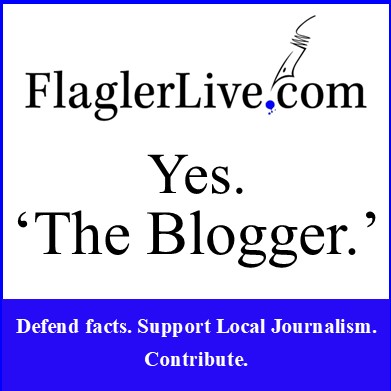
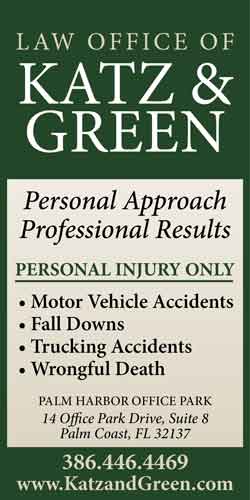


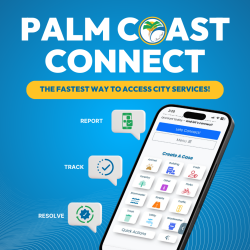






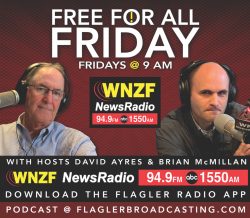

Disgusted says
Well, we wouldn’t want any trees left in this county! Espanola is one of the few places left that have any nice treed areas. I hope the everpresent greed doesn’t allow this to happen. There are plenty of other lots they could use w/o destroying these ancient, beautiful old trees and the nice playground area. Greedy assholes
Jane Gentile-Youd says
Glad our new county attorney uses his brains.
JimboXYZ says
Wow, looks more like a standard house that converted & calls itself a church ? In that case if anyone is ever ordained as a minister, anyone can declare their home as a church ?
https://blog.helpyousponsor.com/church-vs-nonprofit-understanding-the-legal-differences/
Makes me wonder if God would approve or “The Lord told me to establish a church in the living room of my house.” ?
As for government, is it more of the Flagler County Commission just doing as it pleases as usual ?
Bo Peep says
The Flagler City Commission just did it with the city’s golf course . Selling 32 acres within a few hundred feet of the beachfront for ~$800K with the promise that it would never be rezoned for development. Who believes that horse wallop?
Jane Gentile Youd says
Bravo Mr. Rodriguez for reading the LAW to the clueless commissioners, unlike your predecessor who always just sat and smiled and approved ‘to form only’ ( which practice needs to stop) -I cannot believe that an attorney has ro remind elected officials that we are a government of the people, by the people and for the people and therefore require OPEN PUBLIC HEARINGS on every ( non emergency) decision the county want to make and that the county is prohibited from making decisions on any of our assets or money without our knowledge and ability to verbalize our opinion in our efforts to influence the commissioners prior to the commission making a final decision.
Absolutely amazing that not one of the five highly paid commissioners knew the law and had to be told by our new attorney,
Thank you Mr, Rodriquez, Hopefully we will have no more Captains, Sheriffs Contaminated buildings, Rat infested Hotels , and maybe even hopefully a properly run legallly run airport under your legal guidance,
Ed P says
Just say no.
No drama no issues.
Church has been making do for 44 years.
Not really this complicated.
Pogo says
@Thank you, County Attorney Michael Rodriguez
Cometh the hour, cometh the man…
https://www.google.com/search?q=comes+the+hour+comes+the+man
Elsewhere
Praise Me Duh Lord, and pass the gravy…
As Trump is the latest to demonstrate:
“You don’t get rich writing science fiction. If you want to get rich, you start a religion.”
— L. Ron Hubbard
https://www.google.com/search?q=l+ron+hubbard
Rita says
It doesn’t need to be paved to be used as a parking lot. Park under the trees. Build a one way road and parking spaces out of shell…no paving.
just wait for it says
Isn’t this Leann Pennington church? Doesn’t a county employee and her husband now run this church? Isn’t that employee a good friend of Leann Pennington?
Toxicology says
There were endangered rosette spoonbills and woodstorks in the ditches all along palm coast parkway 6 months ago. Then PCSW did an illegal treatment and killed everything. Deer, armadillo, birds, fish, all puked dead in the ditches. This level of contamination is correlated with childhood leukemia. Then the County wonders why the high class tax dollars are leaving the country, they are literally poisoning the citizens, killing nature, and refusing to admit to thence the grave consequences. There is a reason we have become a hotspot for kidney stones. In children these acute toxic herbicide and pesticide applications cause cancer. In adults the pathology effects the excretory system/kidneys
Jane Gentile-Youd says
To toxicology
Please provide proof so we can force removal of all responsible. Leann’s husband passed a few months ago.
BTW Revuelta in Spanish means mixed up in reverse….fitting name for an idiot employee.
Pogo says
@Toxicology
Apparently, 25 hours on, the shocked silence continues. We seem to have gone from rigorous — to rigor mortis.
I guess too much winning can do that…
And so it went. And then it didn’t.